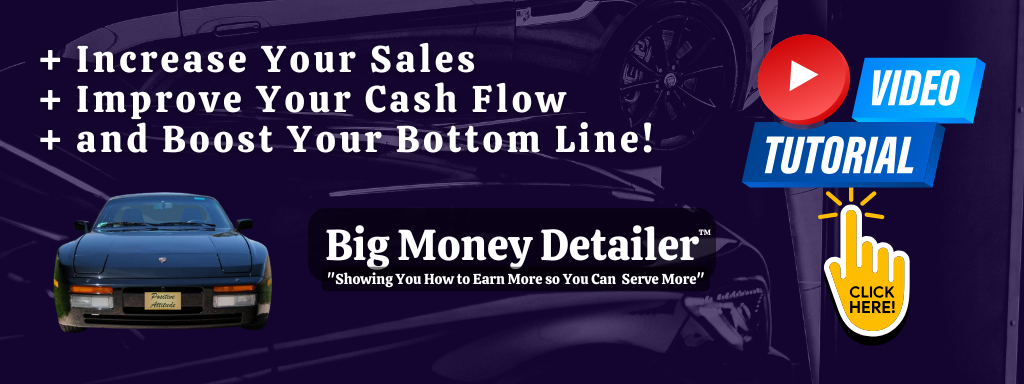Understanding Your Target Audience
Identifying Needs and Wants
When I first dove into the world of marketing, I quickly discovered that the secret to success lies in understanding your target audience. Identifying their needs and wants is crucial. You can have the best product around, but if you’re not hitting the nail on the head for what your audience truly craves, you’re going to miss the mark.
I recommend diving into some market research. Surveys, focus groups, and social media scouring can help you gather insights. It’s about getting into their heads! What keeps them up at night? What are their pain points? Once you start addressing these questions, you’re on the right track.
Don’t forget to keep your audience in mind as you craft your selling proposition. If you know them well enough, tailoring your message will feel natural, and they will feel personally connected to what you’re offering.
Segmenting Your Market
Segmentation is key! Not everyone needs or wants the same things, and that’s where segmentation comes in. I’ve found that splitting your audience into smaller groups allows for a more tailored approach to your marketing efforts.
Think about demographics like age, location, and income, but also consider psychographics—values, attitudes, and lifestyles. This deeper understanding can allow your unique selling proposition to resonate stronger with each group, thus driving sales more effectively.
Don’t just settle for broad categories. Get specific! The more niches you can identify, the better you can serve them with your proposition, ultimately leading to better engagement and sales.
Empathy and Connection
Empathy is a game-changer. To really drive home your unique selling proposition, it’s important to connect emotionally with your audience. Share your own story, your struggles, and triumphs—make them see the human side of your brand.
When I talk about my experiences, people relate. They might not be facing the exact same issues, but they’ve had similar feelings. This connection makes your message stick. It’s about developing a rapport and trust before you even pitch a product.
Through empathy and connection, your audience not only remembers you, but they’re more likely to buy from you. They want to support the brand that seems to understand them on a deeper level.
Identifying Your Unique Selling Proposition
Discovering What Sets You Apart
Every successful business has a unique selling proposition (USP) that sets it apart from competitors. Figuring out what yours is might take some soul-searching. What’s that unique spark in your offering? It could be the quality, price, customer service, or something else entirely.
In my experience, brainstorming sessions can be super helpful. Gather your team, toss ideas around, and don’t hold back. You might stumble upon a unique angle that makes your business stand out in a crowded marketplace.
Once you identify what makes you special, don’t just keep it in a vacuum. Use it as the cornerstone of your marketing messages, ensuring that it’s clear to your audience why they should choose you.
Testing Your Proposition
Once you’ve honed in on what makes your offering unique, it’s time to put it to the test. Whether through A/B testing, surveys, or focus groups, see how your audience responds to your proposition. This feedback is gold, and adapting based on what resonates will only strengthen your position.
I once had a slogan that I thought was killer, but after testing it, I realized it completely missed the mark for my audience. Listening to feedback is essential—don’t get too attached!
Iterating on your USP based on feedback will not only enhance its clarity but also improve customer perception, ultimately driving more sales.
Integrating Your USP with Branding
Your unique selling proposition isn’t just a tagline; it needs to be woven into the fabric of your branding. From colors and logos to tone and voice, every interaction should reflect your USP. It takes mindfulness to ensure that each piece of marketing material resonates with that core message.
I’ve always believed consistency is key. If your branding and USP are mismatched, it can confuse your audience and dilute your message—leading to lost sales. Imagine your customers being baffled by who you are and what you stand for; that’s not the goal!
By effectively integrating your USP into your brand, you create a cohesive identity that customers can easily recognize, understand, and resonate with, which of course leads to increased sales.
Communicating Your USP Effectively
Crafting the Right Message
Your messaging is going to be what captures your audience’s attention. Start by simplifying your USP into a clear, concise statement. It shouldn’t be complicated—something simple that your audience can remember and repeat.
I’ve found that less really is more. The more straightforward your message, the easier it is for your audience to grasp what you’re all about. Make it relatable and catchy, something that’ll stick in their minds.
Once you nail down that initial message, plaster it everywhere. Use social media, your website, and any marketing materials to keep it in front of people. Consistency will reinforce it!
Utilizing Multi-Channel Marketing
In today’s world, one channel just won’t cut it. Ensure that your unique selling proposition is communicated across multiple platforms—social media, email, your website, and so on. The more channels you use, the wider your reach.
Don’t shy away from trying new platforms as well. Experimenting with TikTok, for example, can open up tons of new avenues for reaching audiences who may not frequent more traditional spaces.
It’s about meeting your audience where they are. If they’re scrolling through Instagram in their downtime, make sure they see your USP. It maximizes the chances of your message sticking!
Engaging with Your Audience
Finally, it’s essential to engage with your audience directly. Create a dialogue, respond to comments, and genuinely interact with your followers. Show them that you care about their opinions and feedback on your USP, and adjust accordingly.
I’ve learned that the more you engage, the stronger the connection becomes. This not only helps with understanding how people view your proposition but also builds loyalty and trust.
Ultimately, when your audience feels valued, they’re much more likely to become repeat customers. And we all know that loyal customers are gold in driving sales!
Keeping Your USP Dynamic
Regular Review and Reflection
The market is always changing, so it’s vital to regularly review your unique selling proposition. What worked a year ago may not resonate today. Set aside time to reflect on how your USP is performing—turn that introspection into action.
I often pull out metrics and check-ins with my team to see if our proposition still aligns with our goals and the market landscape. It’s a great way to spot potential areas for growth or evolution.
Remember, flexibility is essential. Adaptation doesn’t mean abandoning your USP; instead, it means staying relevant and ensuring it continues to resonate with your audience.
Staying Ahead of Competitors
Keeping an eye on your competition is a must. If they start to adopt a similar USP, it may be time to rethink your strategy. This can be a real wake-up call to ensure that your messaging continues to stand out in a crowded marketplace.
I suggest conducting competitive analyses regularly. Assess their strengths and weaknesses and find out how your USP can continue to shine amidst the noise.
It’s about being proactive rather than reactive. Always be one step ahead of the game to retain that competitive edge!
Celebrating Your Success
Finally, don’t forget to celebrate your wins. When your unique selling proposition drives sales, take a moment to acknowledge it! It’s essential to recognize when things are going well and to understand how your efforts are paying off.
Share success stories with your team and your audience. It reinforces the value of your USP and fosters a sense of pride and ownership among your team, ultimately driving even more passion into your work.
Plus, those success stories can inspire future strategies and innovations—so never underestimate the power of a good celebration!
Frequently Asked Questions
What is a Unique Selling Proposition (USP)?
A Unique Selling Proposition is a distinct feature or benefit that sets your product or service apart from the competition. It communicates why customers should choose you over others.
How do I identify my USP?
To identify your USP, start by analyzing your market, understanding your audience, and considering what makes your offerings different or better than the competition. It’s about finding that unique spark!
Why is understanding my audience important for developing a USP?
Understanding your audience helps you pinpoint their needs, pain points, and preferences. This information is crucial in shaping a USP that resonates with them and encourages them to make a purchase.
How often should I review my USP?
It’s wise to review your USP regularly, especially when market dynamics shift. A good rule of thumb is at least once a year, or whenever there are significant changes in your business or industry.
Can a USP evolve over time?
Absolutely! As your business grows and the market changes, your USP can and should evolve. Staying relevant and adapting to new developments will help you maintain a competitive edge.



